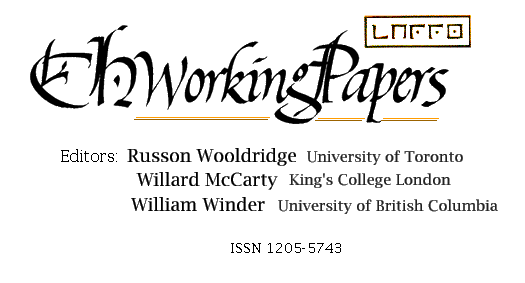Man can even reflect upon his own earlier reflections as these are registered in books and elsewhere. All this is what ultimately the humanistic subjects deal with: Mankind’s life world, [page break] everything around and in men and women insofar as it affects or is affected by human consciousness.
The humanities–and I think we should get this clear–are not defined by being set against a field of science and technology presumably hostile to them. This is a fashionable, but essentially cheap, way of treated both fields.Walter Ong, “Defining the Humanities for Congress”
Browsing through the Notes from the Walter Ong Collection I came across an extended quote from Ong’s address to Congress from 1978 when he was president of the MLA. The address was in support of a resolution to authorize the President to call a conference on the humanities. Walter Ong quotes a definition of the humanities which he wants to play with,
The joint resolution introduced by Mr. Brademas on October 27, 1977, in the House of Representatives follows Congress description of 1965 in stating that:
“The term “humanities†includes, but is not limited to, the study of the following: language, both modern and classical; linguistics; literature; history, jurisprudence; philosophy; archeology; comparative religion; ethics; the history, criticism, theory, and practice of the arts; those aspects of the social sciences which have humanistic content and employ humanistic methods; and the study and application of the humanities to the human environment with particular attention to the relevance of the humanities to the current conditions of national life.â€
He then goes on to conclude,
However, if the humanities need technology, technology also needs the humanities. For technology calls for more than technological thinking, as our present ecological crises remind us. Technology demands reflection on itself in relation to the entire human life world. Such reflection is no longer merely technology, it includes the humanities even though it needs to be done especially by scientists and technologies.
Ong, Walter J. “Statement of Rev. Walter J. Ong, Professor of English and Professor of Humanities in Psychiatry at St. Louis University; and President, Modern Language Association of America.†White House Conference on the Humanities. Joint Hearings before the Subcommittee on Select Education of the Committee on Education and Labor, House of Representatives, and the Subcommittee on Education, Arts and Humanities of the Committee on Human Resources, United States Senate, Ninety-Fifth Congress, First and Second Session, on H.J Res. 639 to Authorize the President to call a White House Conference on the Humanities. Washington: U.S. Government Printing Office, 1978. 684-88.
 I am at the CaSTA 2008 New Directions in Text Analysis conference at the University of Saskatchewan in Saskatoon. The opening keynote by Meg Twycross was a thorough and excellent tour through manuscript digitization and forensic analysis techniques.
I am at the CaSTA 2008 New Directions in Text Analysis conference at the University of Saskatchewan in Saskatoon. The opening keynote by Meg Twycross was a thorough and excellent tour through manuscript digitization and forensic analysis techniques. 


